NatureZen: Heavenly Hummingbirds
Words and photos by Melissa McMasters
In medieval times, the word “gorget” (from gorge, the French word for “throat”), referred to a cloth wrapped around a woman’s neck and head. Over the years, it evolved to describe the metallic collars worn by knights and soldiers to protect their throats. Today, it’s used primarily to refer to one of nature’s most beautiful phenomena: the brilliant feathers on a male hummingbird’s throat.
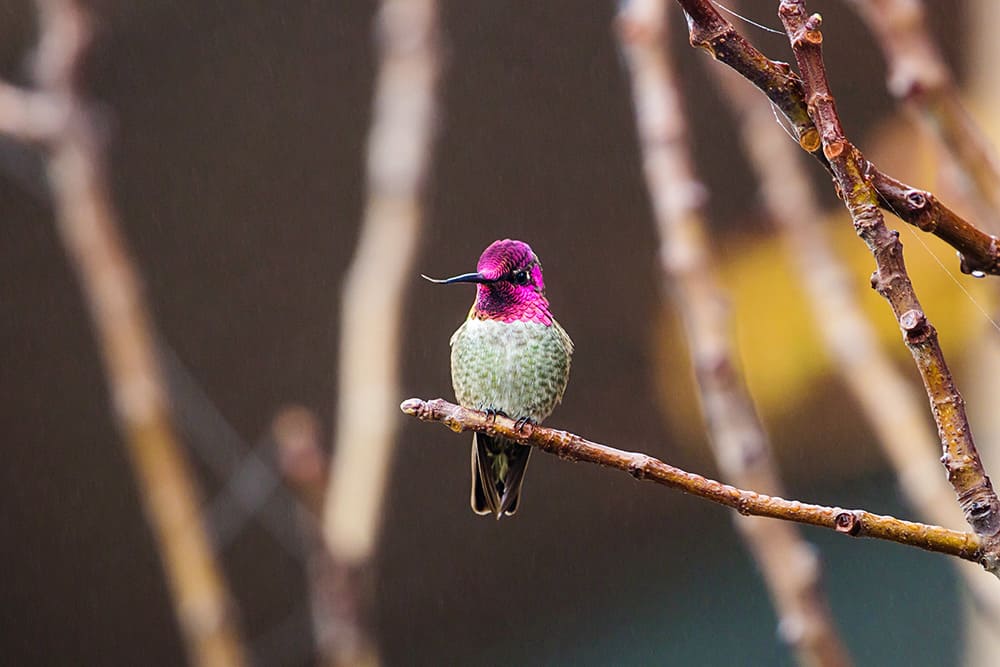
A male hummingbird’s gorget, which can encompass the throat, a small chest patch, or the entire head, is a thin mosaic of iridescent feathers that only glitters when it catches the sun at a certain angle. Hummingbird gorgets come in a full rainbow of colors and even a variety of shapes and sizes.
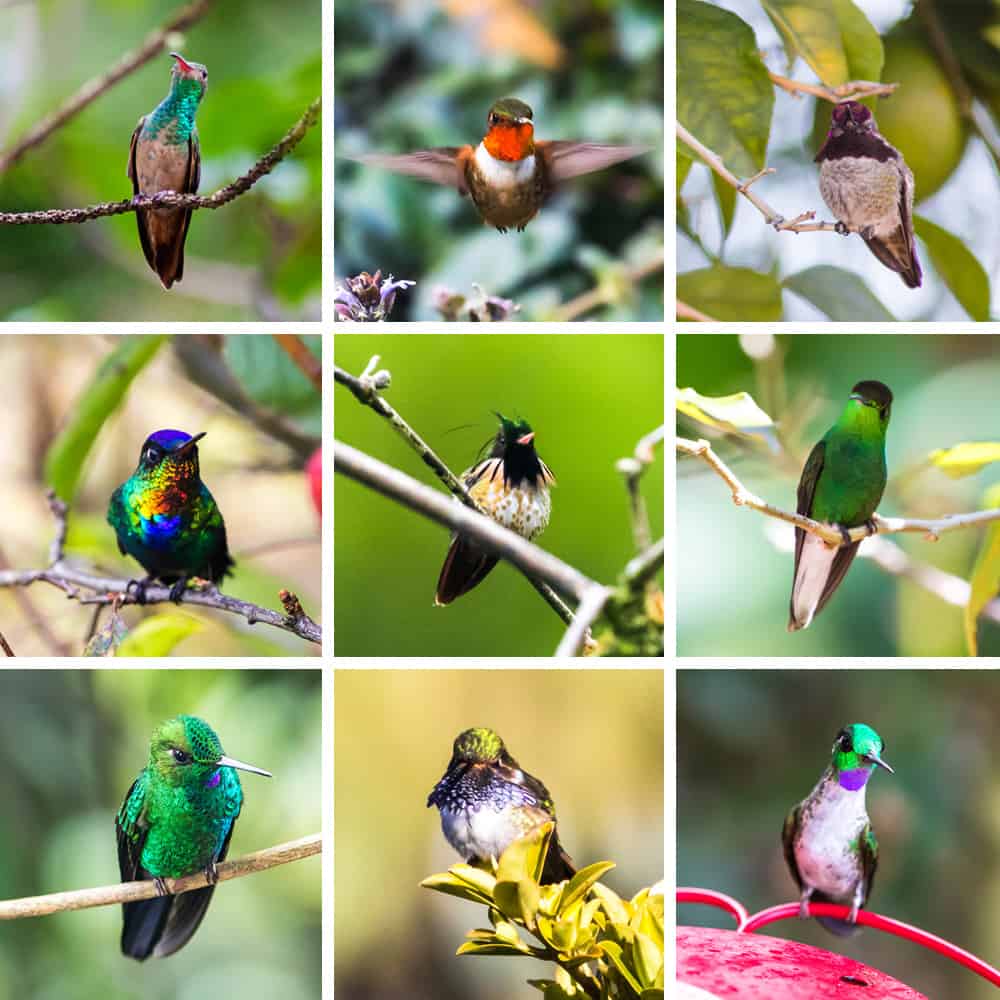
One of the most incredible things about a hummingbird’s gorget is that the feathers have no pigment at all! Microscopic structures within the feathers interact with light in the same way a prism does. If you turn a prism toward flat light, it simply looks clear. In the case of a hummingbird, in flat light the throat appears black, because the melanin granules in the feathers are absorbing all the light. When the sun hits, though, the reflections and refractions create stunning displays.
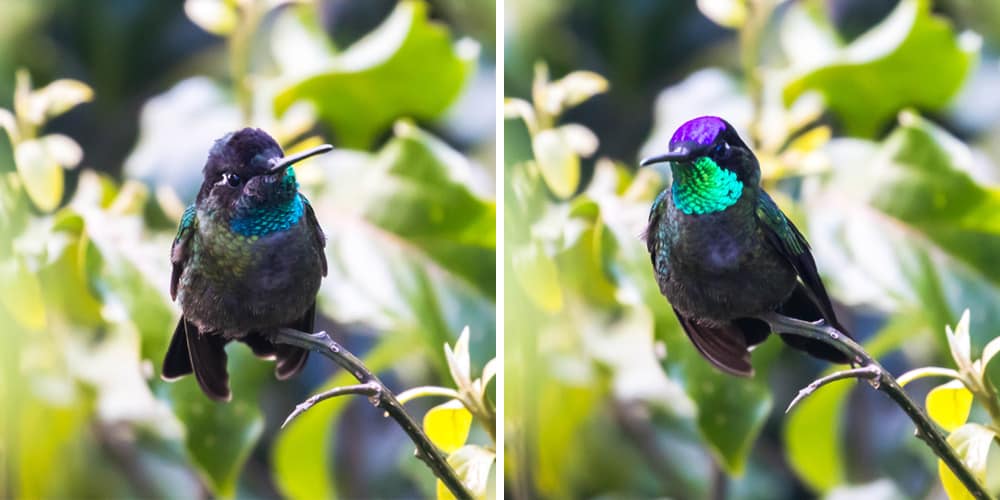
Hummingbirds are amazingly strong and agile. They can fly forward, backward, and upside down, achieving speeds of 30mph in normal flight. Males go even faster–up to 45mph–when performing a “courtship dive.” A male broad-tailed hummingbird, for example, climbs up to 100 feet in the air before zooming down toward a perched female. In the time it takes a human to blink an eye, the bird fans his tail feathers to make a high-pitched chirping sound, fluffs his gorget feathers to produce an iridescent display, and begins to re-ascend to 100 feet. This dazzling show creates a sensory feast for the female!
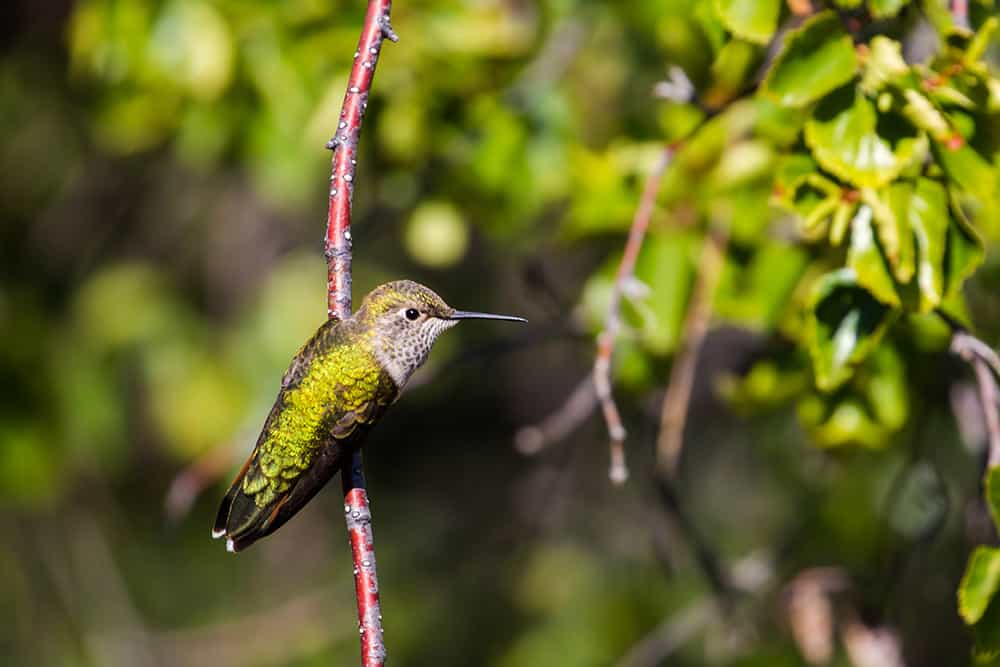
If you’ve ever encountered an unexplained buzzing noise in the forest in the springtime, one that fades in and out every couple of seconds, look up: you may see a male hummingbird in one of these parabolic displays. The sound they make as they pass by the females sounds to me like the clicking of pinball paddles, or the beads of an abacus.
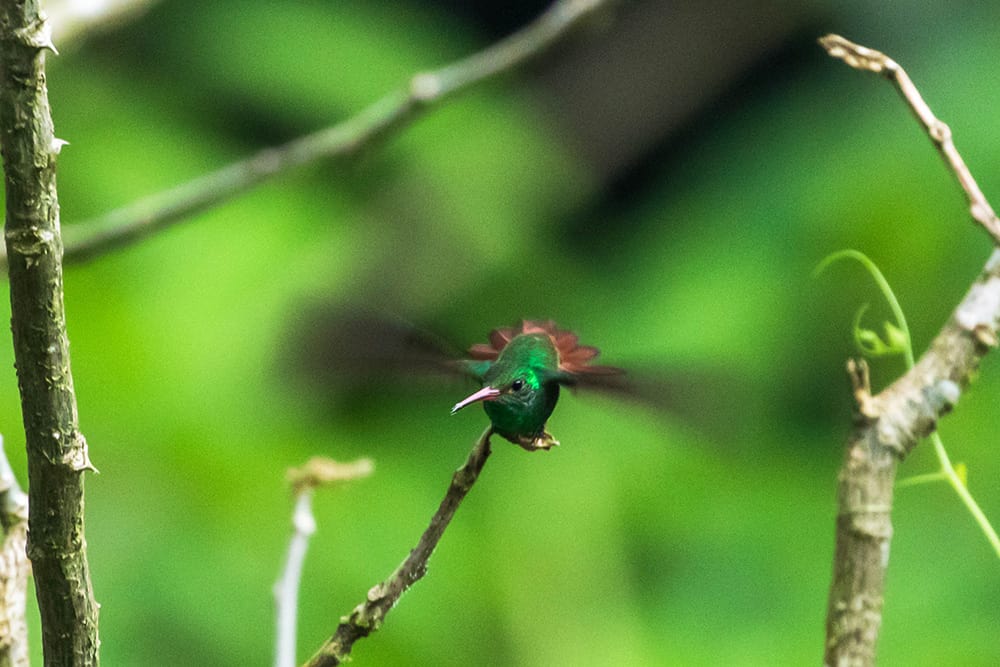
In Memphis, we have one regular species of hummingbird: the ruby-throated. It’s a migratory species, and the only hummingbird that nests east of the Mississippi river in the US. If you have ruby-throats that visit feeders in your yard, there’s a decent chance you’re seeing the same individuals year after year. Banding studies of ruby-throated hummingbirds have shown that not only do these birds often return to the same location each year, but they frequently arrive on the same day.
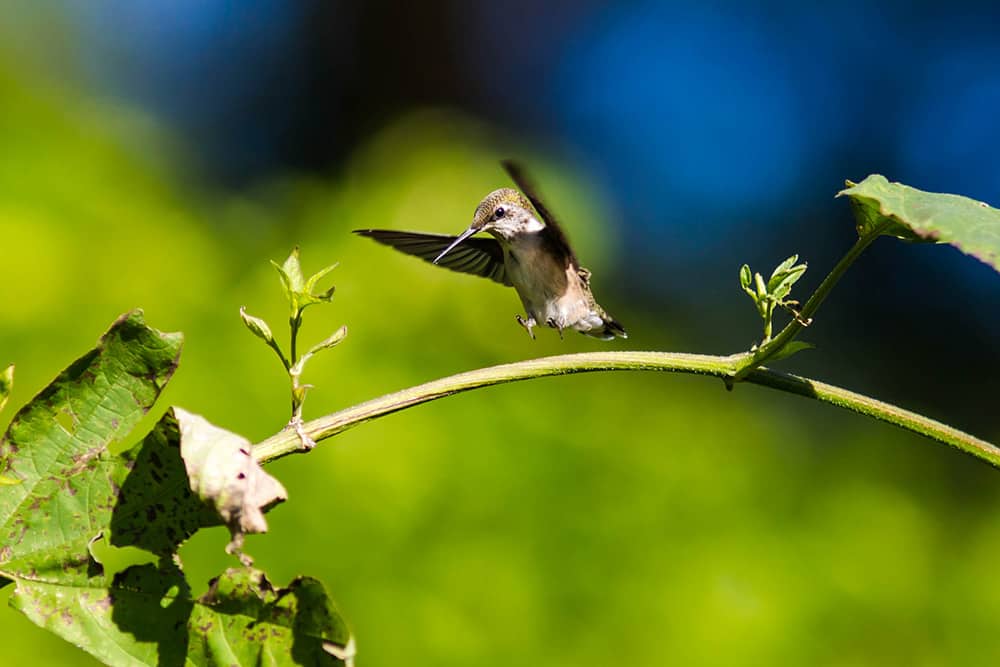
Why don’t our ruby-throats stay here during the winter? With few blooming plants or insects available in their breeding range during the winter months, the ruby-throats have to head down to Central America to get enough to eat. By returning to North America to breed, they avoid competition for resources with the many other tropical hummingbirds that stay behind in Central America.
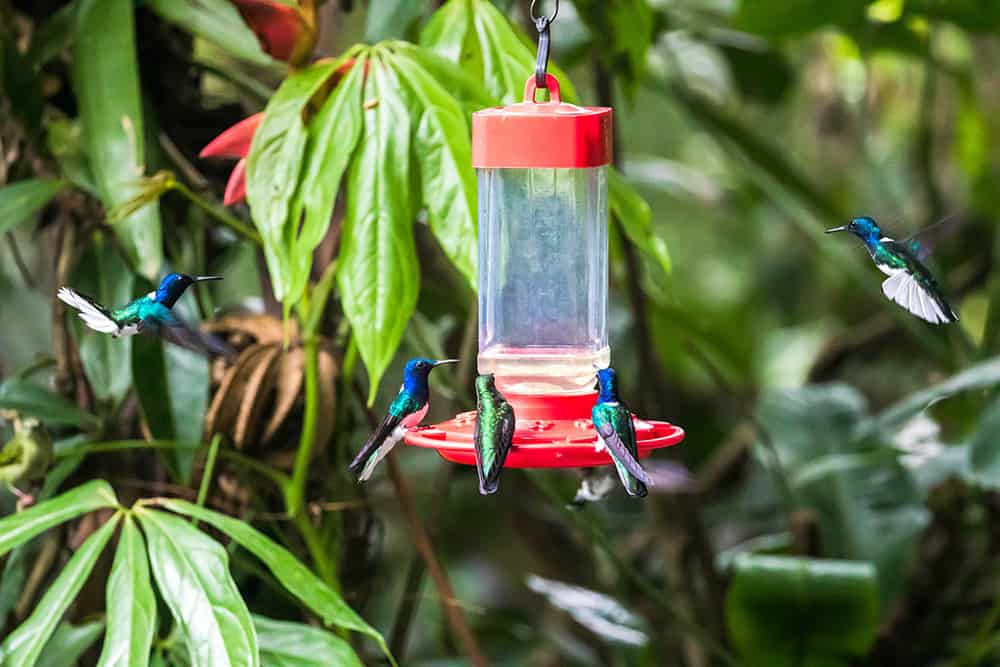
We do, however, occasionally see some hummingbirds in the winter. Over the last few years, several folks in Tennessee (including right here in Memphis) have reported rufous hummingbirds overwintering in their yards. These birds are primarily residents of the Western US, where temperatures can become quite cold at night even during the summer months. Therefore, they’re more adapted to entering a torpid state (where their temperatures and heart rates drop to conserve energy) than their Eastern cousins the ruby-throats. If you’re up for keeping your hummingbird feeders around a little late, you may just attract a winter resident!
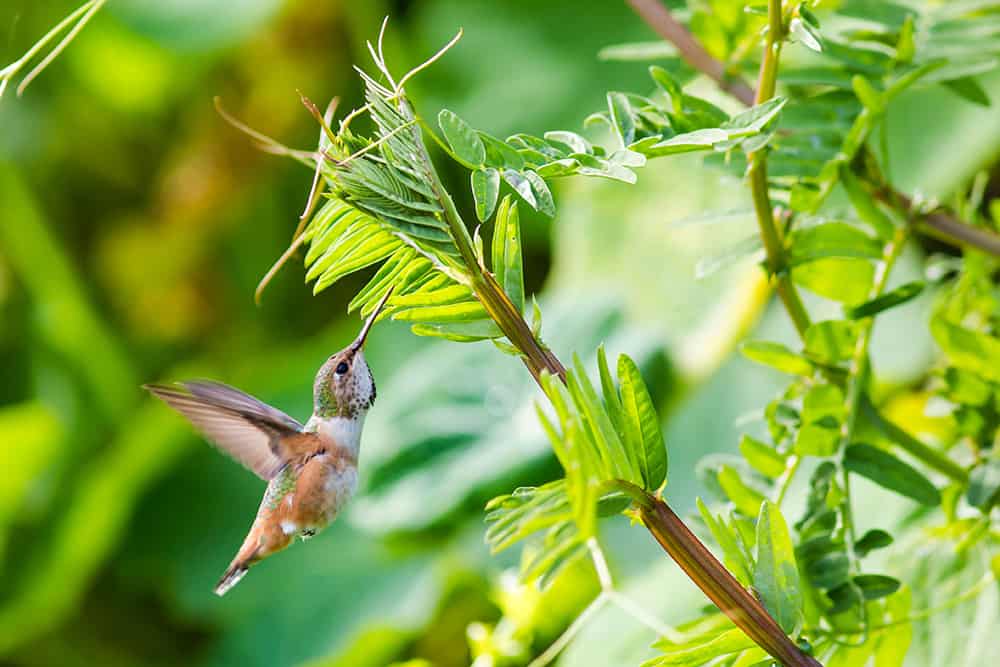
If you’ve spent much time around feeders, or in good hummingbird habitat, you’ve probably wondered why hummingbirds constantly look like they’re trying to kill each other! Territorial disputes, protection of nests, and competition for food lead to some truly acrobatic mid-air duels, as these birds use loud chittering noises, aggressive postures, diving, and chasing to establish their positions. Hummingbirds are not social creatures; males and females don’t stay together after mating, and each bird competes with all the others for food.
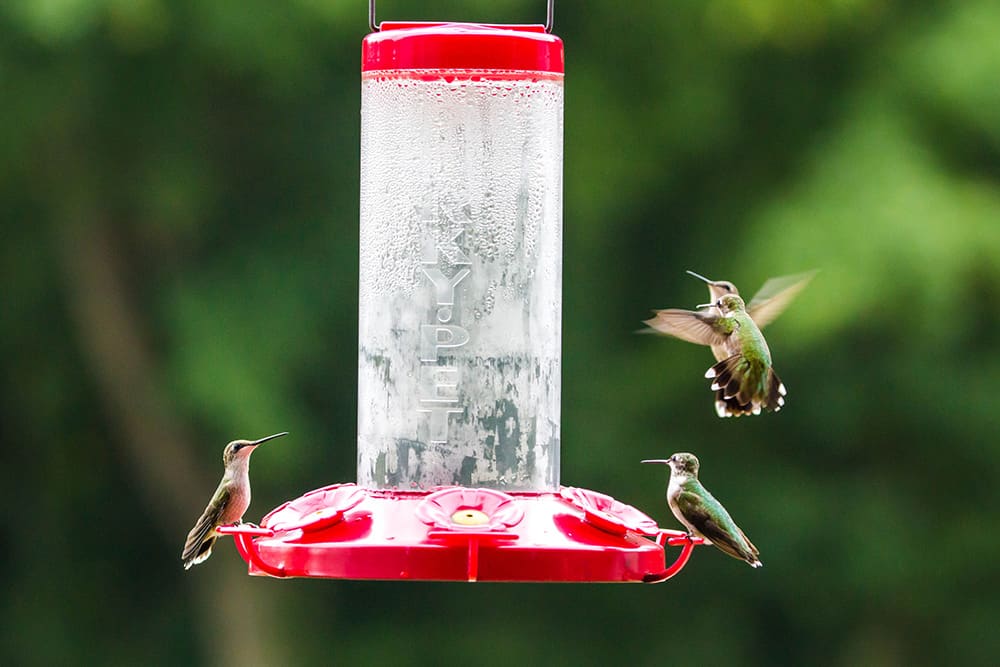
Our ruby-throated hummingbirds typically arrive in early April, so it won’t be long now before we can walk through the Old Forest and hear the chaotic whizz of hummingbirds looking for mates, staking out territories, and competing for nectar and insects. We’ll check back in this spring with some tips for attracting and nourishing these hummingbirds in your yard.



